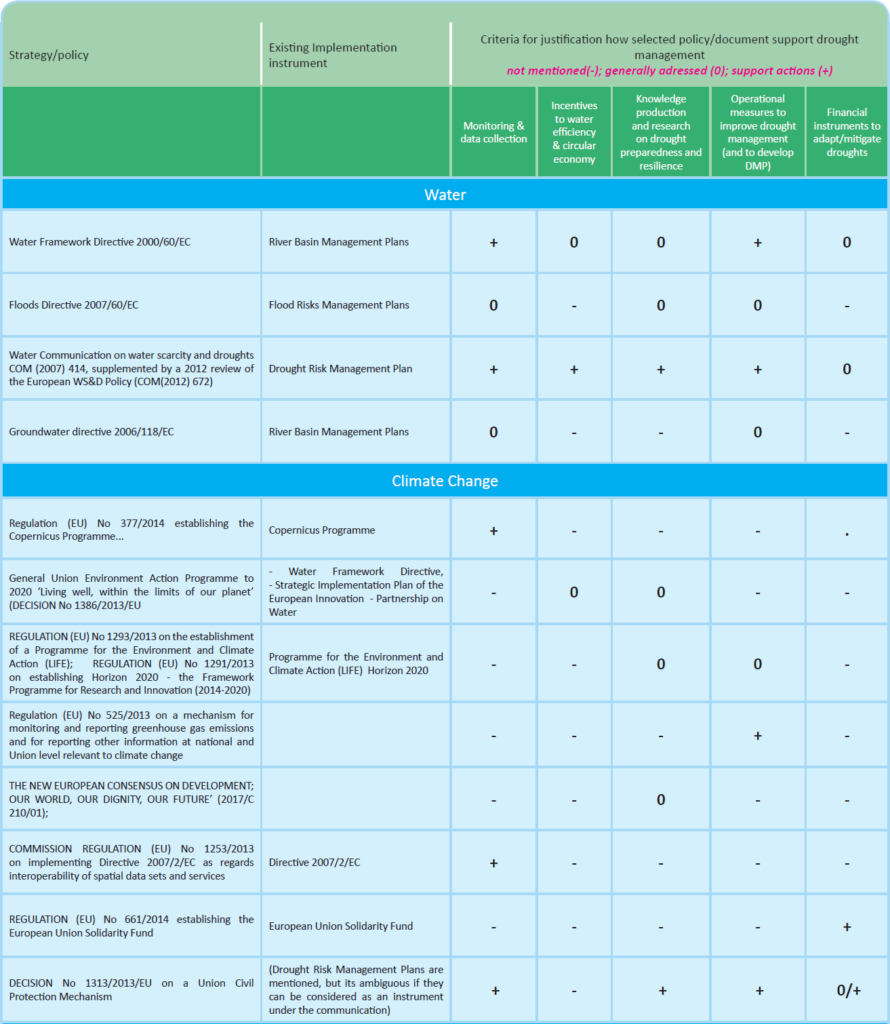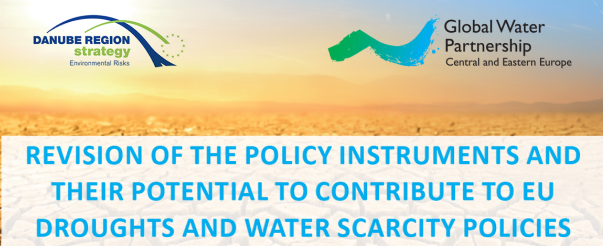Revision of the EU policy instruments and their potential to contribute to EU droughts and water scarcity policies prepared as a collaboration of Integrated Drought Management Programme in CEE and EU Strategy for the Danube Region (Priority Area Environmental Risks) experts.
The revision of the policy instruments was done as one of the follow up steps of the Guidelines for preparation of the Drought Management Plans, which introduced a seven-step approach to develop a plan in the context of the EU Water Framework Directive. It aims to identify other selected EU policies in various fields that might support management of droughts.

Missing drought policies
Droughts are always a context natural phenomenon and the response to drought needs to reflect specific circumstances. Severity and frequency of droughts can lead to water scarcity situation, while overexploitation of available water resources to meet various water needs can exacerbate the consequences of droughts. Despite extensive damages in the last decades, droughts have been traditionally managed only as crisis situations, by implementing emergency procedures and urgent measures. Most countries in the region do not have an “umbrella document” in place that would directly address the overall drought management. Droughts and their management are only partially and insufficiently considered in various strategic documents, laws, regulations, and programs, mostly only in connection with emergency situations and natural disasters. In addition, terms like dryness, dry periods, heat waves, water scarcity and drought seem in these documents to be used interchangeably. There is also an evident lack of operational national drought management plans.
The need for action
There is currently no EU directive or policy especially dedicated to drought but current legislation, sectoral policies, and instruments – binding or not – in the fields of water, agriculture, climate change, energy, industry, transport, nature protection, and biodiversity are partially or at least marginally related to drought management and can therefore support drought management policies.
In this revision, EU policies, related to water, agriculture, climate change, energy, industry, transport, nature protection, and biodiversity, have been analyzed by experts on the basis of five criteria: 1) monitoring; 2) incentives to water efficiency and circular economy; 3) knowledge and research; 4) measures to improve drought management and to develop drought management plans; 5) financial instruments.
Revision of the policy instruments will serve countries as background for the integration of drought management into most relevant existing policies. Additionally, it will support a development of a separate (new) drought policy with reference to existing legal frameworks.
Key points of the revision
The Water Framework Directive contains several provisions dealing with quantitative aspects which connect with water scarcity problems. The joint Integrated Drought Management Programme of WMO and GWP CEE addressed this and developed special Guidelines for the development of the Drought Management Plan as part of the RBMP. The links between the preparation of drought management plans and river basin management plans may have a synergic effect in achieving environmental objectives. A direct connection with EU water policy can facilitate the development of national drought policy based on the principles of risk reduction and the improved implementation of the Water Framework Directive.
Agriculture is one of the largest water–demanding sectors. The European Common Agricultural Policy (CAP) focuses primarily on the agricultural perspective of water scarcity and drought, though it also has implications within the water management perspective as well.
The EU Climate Change Adaptation Strategy, aiming to make Europe more climate-resilient, strives to build a response capacity, prevention and limit the damage as it occurs. By taking a coherent approach and providing for improved coordination, it will enhance the preparedness and capacity of all governance levels to respond to the impacts of climate change (especially drought impacts).
The Natura 2000 network may contribute to the regulation of water extremities, and as such, it may play a role in mitigating droughts. The Biodiversity strategy for 2030 provides a vision that has elements related to drought management. By consciously integrating green infrastructure concepts into spatial planning and territorial development, the environment becomes more “robust”, also in terms of drought resilience.

Photo: Part of the evaluation chart.
In conclusion
Integrated Drought Management Programme in CEE and the objectives of the EU Strategy for the Danube Region Priority Area 5 (environmental risks) are emphasizing on the improvement of drought risk preparedness, proactive management and enhanced cooperation of key national and regional level actors. All to ensure the application of drought management in an integrated way. With this revision, there is a hope to spark multi-party conversation among public and private hydrological and climate change experts, water managers, those responsible for agricultural policy and major water users such as irrigators and urban water suppliers.
Recent developments, like the presentation of the European Green Deal by the European Commission, Public consultation on the New EU Climate Adaptation Strategy and the adoption of the effects of climate change, including drought and water scarcity as Significant Water Management Issue by the ICPDR, might give further momentum to combat drought and water scarcity.
The REVIEW is avaiable here:




